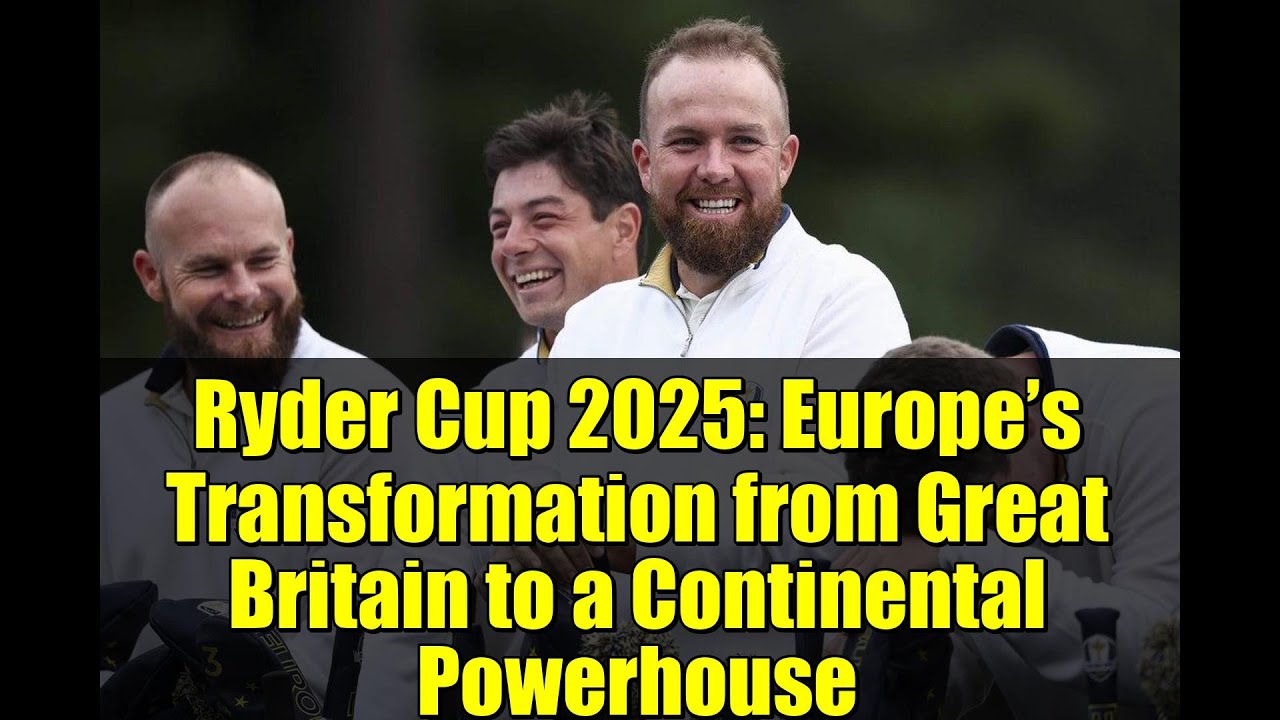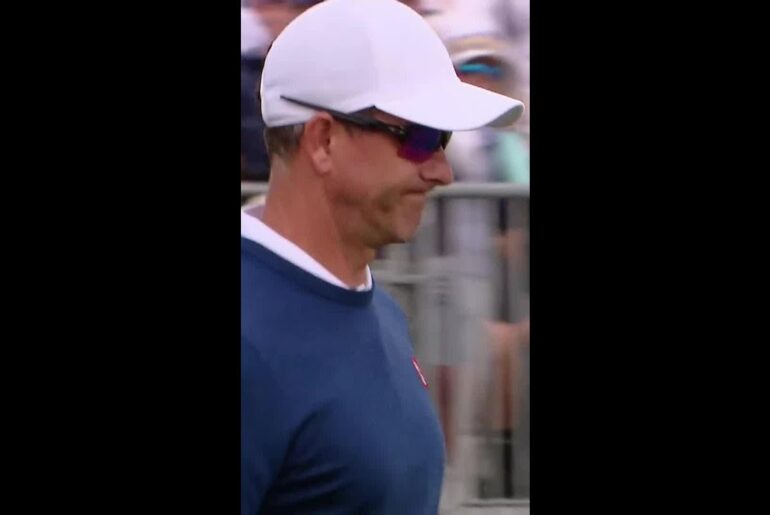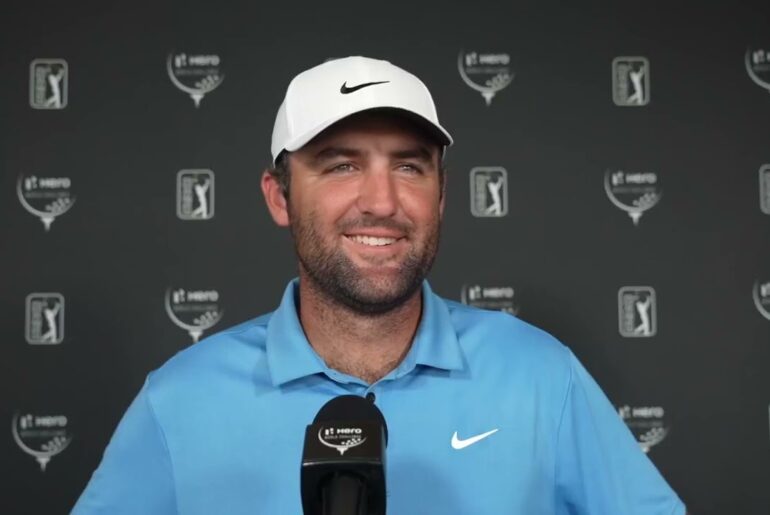Explore the fascinating evolution of the European Ryder Cup team from its Great Britain and Ireland roots to a truly pan-European powerhouse in 2025. This video delves into how golf’s growth across continental Europe, including countries like Spain, Germany, Norway, Sweden, Denmark, and Austria, has reshaped the team dynamic and competitive edge. Learn about key players like Jon Rahm, Viktor Hovland, Ludvig Åberg, and Rasmus Højgaard, and how national golf programs and accessibility have fueled this transformation. Discover the intercultural dynamics, leadership changes, and the future outlook of European golf in the Ryder Cup.
Keywords: Ryder Cup 2025, European Ryder Cup team, golf evolution Europe, Jon Rahm, Viktor Hovland, Ludvig Åberg, Rasmus Højgaard, Sepp Straka, European golf development, Ryder Cup history, continental Europe golf, golf accessibility, Ryder Cup strategy, Luke Donald captain, Ryder Cup highlights, golf diversity Europe.
Imagine a moment of pure inspiration at the Ryder Cup, where diverse European legends unite to celebrate their shared passion for golf. It’s a testament to how far the team has come from its humble beginnings. But here’s where it gets controversial. Is this unity as magical as it seems? Or is there more beneath the surface that challenges our perceptions of team spirit? Dive in as we explore the fascinating transformation of Europe’s RDER Cup squad. Evolving from a Great Britain and Ireland focus to a truly continental powerhouse. The Athletic is providing live updates on the 2025 Ryder Cup opening ceremony and practice rounds so you can follow along in real time. https.ny ny times.com/liveblogs/rdercup 2025 Liveupdates FTMXO4L. Picture this. During the 2021 RDER Cup’s opening festivities, Captain Padrick Harrington screened an uplifting video featuring legendary players expressing their honor in representing Europe. As the clip wrapped up, former captain Thomas Bjorn took the stage. We come from varied cultures, backgrounds, and beliefs, he remarked. Then the iconic Bernhard Langer chimed in to complete the thought. Yet when we unite, something extraordinary occurs. A Danish player passing the bat to a German who sets up an Irishman, three European icons speaking almost as one to illustrate the team’s rich diversity. This scenario was unimaginable five decades ago, and it’s a point European athletes often chuckle about, noting how it’s frequently misunderstood by outsiders. Time and again, articles highlight the US team’s efforts to match Europe’s camaraderie with Americans striving for tighter bonds, while seasoned European pros like the Scottish legend Colin Montgomery dismiss the notion. We’re not perpetually one joyful clan, Montgomery once explained. Conflicts arise, problems surface. We collaborate because we’re passionate about golf, he added, not necessarily due to personal affection. Diversity within European Rder Cup squads isn’t a recent development. For nearly 60 years, the competition pitted 12 Americans against 12 players from Great Britain and Ireland until 1979 when it broadened to include all of Europe with Europe securing only one victory since 1947. The event had lost much of its excitement, so it welcomed reinforcements like the talented Spanish golfer Sevi Balisteros. Soon after, Bernhard Langer debuted for Germany in 1981. Additional Spaniards followed, and by 1985, Europe triumphed, breaking a 30-year winless streak. Since then, this bianial spectacle has grown more competitive with Europe claiming 12 of the last 19 Ryder Cups. And this is the part most people miss as we anticipate the 2025 Ryder Cup kicking off Friday at Beth Page Black in New York. That’s www.nytimes.com/athletic/6653324 Ryder Cup 2025. This squad features five players from beyond the British Isles, many hailing from nations that were golf underdogs in 1979. Beyond the consistent Spanish star John Ram, there’s Victor Hovland from Norway, Ludvik Arberg from Sweden, and Rasmus Hoygard from Denmark. His twin Nikolai was part of the team in 2023. Plus, Sept Straer, an Austrian native who relocated to the US as a teen. Two years back, Europe’s team hit a turning point. An aging roster suffered a crushing 19-9 defeat to the US at the 2021 Ryder Cup in Whistling Straits, followed by a mass departure of veterans from the DP World Tour to LIIV Golf. This ushered in fresh leadership such as Captain Luke Donald and signaled the likely retirement of seasoned pros like Lee Westwood, Sergio Garcia, Henrik Stenson, and Ian Palter. Today, Europe stands as the defending champion and a strong favorite at this away Ryder Cup. Much of this success stems from a long-term continental transformation. Although the team expanded in 1979, the roster of nations stayed relatively stable for the next 15 years. from 1979 to 1991. It typically included two to four Spaniards and Langanger from Germany with the remainder filled by British and Irish players. However, as golf’s popularity surged, nationalmies in smaller countries and initiatives to make the sport more approachable began cultivating new talent. Suddenly, the map of European involvement extended eastward and northward beyond expectations. In the UK, Gulf has deep roots, Havland observed. And we’re gradually catching up. The real change began in 1993. alongside Langanger Balisteros and fellow Spaniard Joseé Maria Olasabo. The team welcomed Italian veteran Constantino Rocka. Sweden’s first representative, Yokim Haggman, was selected but sidelined by injury. Since then, 11 Swedes have contributed 20 appearances. Then came 1997, a pivotal year. While Balisteros’s captaincy and the event’s first staging in continental Europe at Spain’s Valddorama Golf Club stole the headlines, a subtler milestone occurred. Europe fielded its first team with at least half the players from outside the British Isles. Seven of the 12 golfers hailed from Germany, Spain, Italy, Sweden, and Denmark. With Bern marking Denmark’s debut, Europe emerged victorious 14.5 to 13.5. The squad maintained six continental Europeans in the following two cups, suffering a loss at Brookline in 1999 before prevailing at the Belelfrey in 2002. Honestly, shared Paul McInley, a three-time Ryder Cup participant and victorious captain. It’s not a major deal. It unfolds naturally without deliberate focus or concern. It’s just organic growth. In the past, Europe relied on superficial ties like shared nationality, pairing Spaniards, or grouping Swedes, McInley noted. Nowadays, decisions are datadriven. Suggested partnerships stem from complimentary skills in the matchplay format backed by statistics. Personal connections aid, but they’re not the foundation. Still the emergence of elite players from other nations progressed slowly. Germany added one more in Martin K who appeared three times. Denmark saw Bjorn’s breakthrough but another DNE didn’t join for 20 years until the Hoygard twins. France’s first was Jean Vanerved in 1999 with just three total players each making one appearance. Italy expanded with brothers Francesco and Eduardo Molinari in 2010 where Eduardo played three times and both became key vice captains. Yet Italy has only three representatives overall. Belgium contributed two in the 2010s. Thomas Peters and Nicholas Koulsarts. Spain Se Bayest left celebrates winning the 1983 Ryder Cup with captain Tony Jacquellyn right. As Scotland’s Sam Torrance and Germany’s Bernhard Langanger watch Getty Images. Lately, a fresh influx of talent has broadened the team’s horizons. John Rahm joined in 2018, boosting Spain’s count to 11 players and 43 appearances. Norway got its first in Havland in 2021, followed by Austria’s Burn Vberger and now Straka. The Scandinavian surge truly took off in 2023. Havland returned and Captain Luke Donald gambled on young talents like 22-year-old Nikolai Hoygard and 23-year-old Oberg who had only recently turned pro and hadn’t competed in a major. Rasmus Hoygard narrowly missed selection but supported the team as a cart driver. Now, a significant portion of Europe’s core consists of Scandinavians aged 24 to 27, plus Straa at 32, who clinched two PGA Tour wins this year to reach the top 20 globally. Regarding cross-cultural interactions, McKinley admitted they monitor how players connect. During last week’s scouting visit to Beth Page Black, captains observed lunch groupings to ensure no one felt isolated. He was heartened by the daily shifts in multicultural tables. Efforts also include vice captains from diverse regions with Donald selecting all five from continental Europe this time. Thomas Bjorn, Alex Naren, Eduardo Molinari, Joseé Maria Olazabal and Franchesco Molinari. Differences persist though. McInley pointed out that the most vocal figures have historically been from Great Britain and Ireland such as Lee Westwood, Darren Clark, and Colin Montgomery, though Spanish icon Sergio Garcia was a prominent voice. Rory Mroy leads now with fellow Irishman Shane Lowry gaining prominence. Typically, British and Irish players are more extroverted with a playful sense of humor, McInley explained. Continental Europeans tend to be more relaxed, reserved, and introspective. But what sparked this transformation? As Havlin suggested, part of it is increased golf access worldwide. Countries have invested in development programs. Sweden pioneered this with national initiatives for amateur golf. Even Straker trained in the US benefited from Austria’s similar efforts. For instance, Austrian sources report that golf was once an elite pastime, but has democratized recently. European Golf Association figures show registrations climbing from 80,000 to about 125,000 over the past decade. Scandinavian nations, despite smaller populations, boast some of the highest gulfer densities per 100,000 people with Denmark and Finland ranking in the top four. Iceland and Ireland lead at numbers one and two. Gulf in Scandinavia is quite affordable. Havlin noted it’s different from the US. In terms of costs, ultimately these shifts have minimal impact on the team environment. While Langer, Balisteros, and their peers rush to turn pro, today’s structure often includes college golf in America. It’s common place for young players to form bonds through amateur circuits. They all communicate in English, though the Hoygard brothers turned pro at 19. Most of the new generation like Rahm, Havland, Berg, Straa, and Robert McIntyre played college golf in the states. Hoffland shares a strong rapport with his 2023 partner Orberg and many younger players practice with PGA Tour stars like Rory Mroy and Tommy Fleetwood. Looking ahead, the future of European teams is intriguing. Justin Rose is nearing the end of his career. Mroy is 36, Fleetwood 34, and Lowry 38. While they’re still performing at a high level, sustaining elite play into the 40s is uncommon. Who will fill those spots? Predictions are tricky, but some promising young Europeans come from outside GB1. Nikolai Hoyard at 24 is likely to return. His compatriate Rasmus Negard Peterson, 26, Shaun in 2025. Spaniard David Pig, 23, is an exciting LIIV tour prospect, as is 22-year-old Northern Irishman Tom McKibben. Established English players like Harry Hall, Aaron Ry, and Marco Pen show no signs of fading. Perhaps the more compelling question is which nation will become the 15th to send golfers to the RDER Cup? The list has expanded gradually each decade. Who might join next? Top photo of left to right. Tier Hatton, Victor Hovland, Shane Lowry, and Robert McIntyre. Jared C. Tilton, Getty Images. What do you think? Does this evolution truly strengthen Europe’s edge? Or is the emphasis on data over personal bonds a step backward? Do you agree that cultural differences adds depth, or could they create unseen divides? Share your thoughts in the comments. I’d love to hear if you side with the outgoing Brits or the contemplative Continentals.







